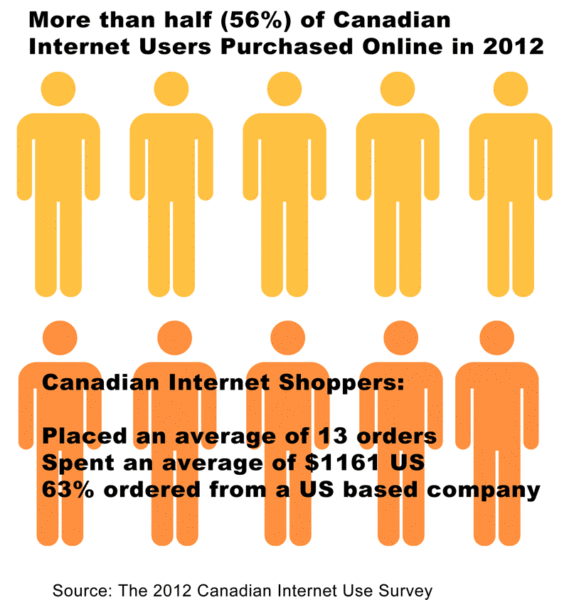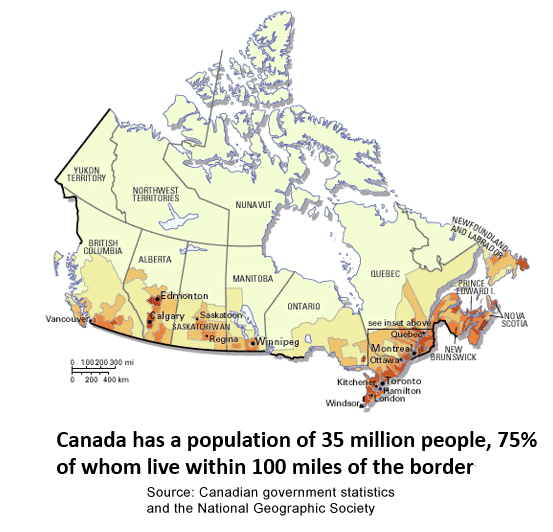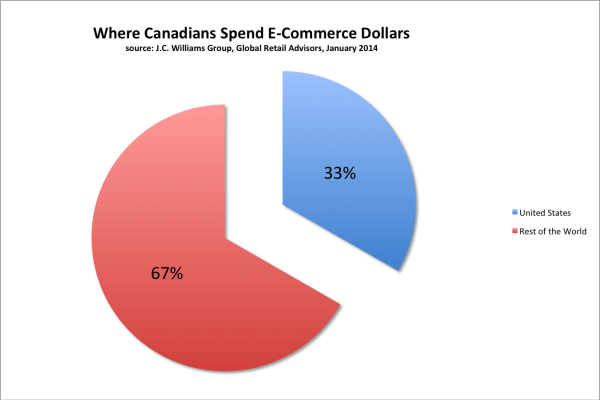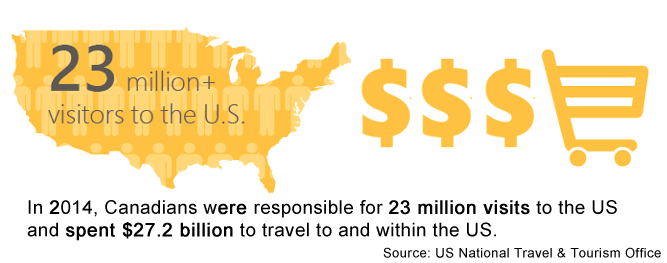The Cross-Border Series Part 1: Capturing Canadian Conversions
Happy Canada Day! In the first of his multi-part series detailing international search marketing, Microsoft's Gabriel Kwakyi discusses tips for doing business with our neighbor to the north.
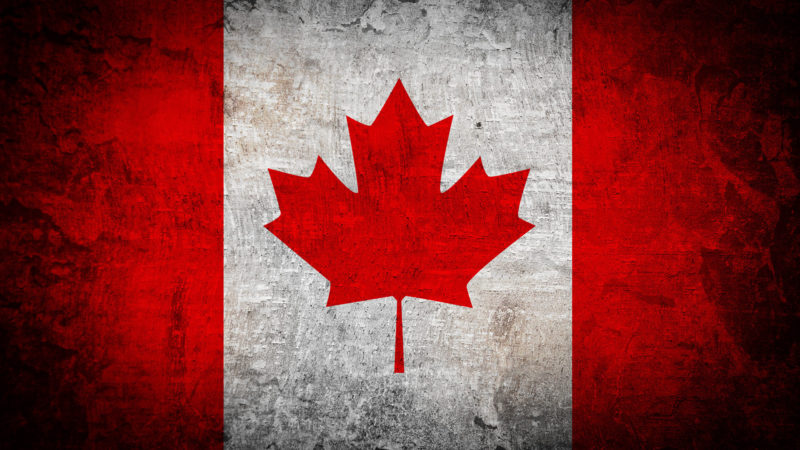
Just as businesses who ignore mobile searchers miss out on a huge number of potential customers, businesses who focus solely on Americans miss out on a massive number of global customers. If you think your company doesn’t have business opportunities outside of the United States, it’s about time to rethink your business strategy.
This four-part series aims to help business decision-makers like you explore the benefits of entering the global market and to guide you in that process.
Part one focuses on doing business with our northern neighbors in Canada:
- Discover the potential that Canadian customers represent.
- Pick up best practices and tips that can give you the edge in marketing to Canadian searchers, including:
- Language, holiday and terminology differences.
- Establishing trust with Canadian customers.
- Effective pricing.
- Identify potential hurdles to doing business in Canada and come away with mitigation tactics, such as:
- Laws and regulations.
- Shipping logistics.
- The exchange rate.
- Competitive due diligence.
- Learn how to reach Canadian customers on Bing and and optimize your search campaigns. (Obviously, there are many other ways to reach Canadian customers, but Bing — because I work at Microsoft — is the platform I know best so I’ll share what I’ve learned. The rest of this column will apply no matter what platform you’re using.)
The Canadian Opportunity — Did You Know?
Four Industries To Highlight
While businesses of all types and sizes can benefit by marketing to Canadian customers, here are four specific industries to highlight:
- Retail. Canada’s retail e-commerce sales grew 17% from 2013 to 2014, according to eMarketer, and are expected to reach $35.2 billion (C$43.95 billion) by 2018.
- Travel. The U.S. Department of Commerce says (PDF) 23 million Canadian visitors came to the U.S. in 2014, and they spent $27.2 billion to get to the U.S. and once they arrived.
- Machinery. Automobiles and other vehicles, heavy and electrical machinery made up a combined $124 billion in US exports to Canada in 2013, according to U.S. Government statistics, proving not only huge cross-border opportunity for OEMs, but all supporting industries as well.
- Technology/Software. With a similar culture and language, no shipping logistics and high profit margins, software and technology companies stand much to gain from marketing to Canadian customers.
Best Practices For Marketing To Canadian Customers
Canadians are not Americans, so re-using American messages and experiences when speaking to Canadian customers is a critical mistake. (Well, technically they, and also Mexicans, are North Americans, but let’s go with common usage here.) Consider some of the following ideas to establish your business’s credibility in the minds of Canadian customers:
Pay attention to differences in language. According to Canadian government statistics, 18.2% of Canada’s population spoke only French at home in 2011, and that number is significantly higher (72.8%) in the province of Quebec. Meanwhile, 17.5% of Canadians overall report being able to converse in both English and French. For maximum reach, translate all relevant aspects of your business that touch French-speaking Canadian customers including ads, landing pages, your website/mobile app and also emails.
- Canadians use the metric system; translate all standard system references, such as centimeters vs inches.
- Canadians refer to postal codes not ZIP codes, and provinces not states; ensure your business follows suit, like this location request window found on Walmart’s Canadian site:
- Make note of the small, but important differences in the Canadian dialect of English that are easily spotted by Canadian customers:
U.S. to Canadian Translations |
|
|---|---|
| Typical U.S. Usage | Typical Canadian Usage |
| color | colour |
| call in | phone in |
| jeweler | jeweller |
| call in | phone in |
| analyze | analyse |
| ton | tonne |
| miles | kilometres |
| feet & inches | metres or centimetres |
| quarts & gallons | litres |
| Farenheit | Celsius |
| ounces (fluid) | millilitres |
| pounds & ounces (dry) | grams or kilograms |
Use trust-building tactics to build your business equity. Investing some effort building a custom experience for Canadian customers can produce big dividends:
- Use a .ca domain. Show you’re serious about your Canadian presence by purchasing a .ca domain or at the least using the country code in your display URLs (www.example.ca).
- Speak directly to Canadian customers. Use “Canada” or “Canadian” in your ads and landing pages to let Canadian customers know you are speaking specifically to them, rather than any customer in general. Also if you’re new to Canada, let customers know that you are now open for business in your ad copy or landing pages, like this notice found on Nordstrom’s Canadian site:
- Set up local operations or partner with Canadian firms. Canadians, like Americans, prefer to buy from local businesses they know and can see. List your local address or consider partnering with a Canadian business to increase your brand’s trustworthiness and not only improve conversion rates, but also make shipping logistics easier and gain knowledge of the Canadian market and laws.
- Understand that Canada is a new market and your brand may not be familiar. You may have to build brand awareness through category, non-branded keywords before Canadian customers recognize your brand and proactively start searching for it.
Don’t confuse or mislead customers with your prices.
- Make sure to price products in CAD, not USD. Solidify your business’ credibility and prevent customers from abandoning their carts at checkout by converting your product prices, both in ads and on-site.
- Use transparent pricing in your ads and landing pages. Just as many Canadian shoppers feel that adding taxes and tip separately from the sticker price is a bad practice, so too do Canadian customers who are hit with extra VAT, markup or international shipping price shocks at checkout.
Mark down the right holidays.
Here are three of the most important holiday shopping opportunities unique to Canada:
- Canadian Thanksgiving: 2nd Monday in October
- Canada Day: July 1st
- Boxing Day: December 26th
View the full list of Canadian Holidays here.
Overcoming Potential Challenges To Doing Business In Canada
The exchange rate. This is currently $0.81 USD to $1 CAD (credit: MSN Money); while the exchange rate does increase the costs of American products for Canadians, simply passing on all costs to your potential customers will have a significant impact on your conversion rates. Consider some of these tactics to minimize the impact of the exchange rate on both sales and margins:
- Test products to find the subset that convert well even at higher price points; any such products are immediate, low-risk profit drivers.
- For high margin items, maintain a low price point while your margins will shrink, these products have margin to give and will still drive bottom-line profits.
- Set up localized operations or partner with a shipping logistics company to lower the costs of shipping and handling and use the cost savings to grow sales by either reducing product price tags or offering more attractive shipping terms.
Shipping logistics. Mitigate the incremental costs of shipping to Canada with these additional tips:
- Offer multiple shipping methods to increase your conversion rates and win more customers than an inflexible, one-size-fits-all method. Some customers may be willing to pay a higher price to get items faster while others may be willing to wait longer if it means paying less.
- Set up a transparent, fair and easy return policy to raise conversion rates by putting customers at ease and elevating your brand’s trust factor.
- Offer free shipping on orders over a certain value to reduce the bite of fixed shipping costs and increase margins by encouraging larger average order sizes.
- Indicate shipping rates in ads to better qualify Canadian customers before paying for a click. Also, provide a shipping costs calculator to reduce confusion and test offering free or reduced-cost shipping as a way to gain new customers and grow high ROI sustainable, repeat business.
Regulatory issues. Ensure your business complies with the regulations on advertising that the Canadian government outlines, avoiding issues by:
- Not misleading consumers
- Providing information required to run a contest
- Complying with anti-spam legislation
Lastly, make sure to do your competitive research. What you know about competition in the United States may not hold true in Canada. Perform some searches for your keywords and make note of the competitors that appear (or don’t appear), their product lines, pricing strategies and service models to effectively position your business amongst the competition for maximum CTR and sales.
Optimize Your Bing Search Campaigns For Canadians
In order to reach high-value Canadian customers, begin by navigating to your campaign settings and adding a Canadian location target. In order to target French Canadians, however, you must set French as the language when an ad group is created; language is a non-mutable setting and if you have French characters in an English ad group they will be disapproved.
Given the fact that your existing keywords will be based on American search trends, it’s highly advisable to perform keyword research based on trends specific to Canada, done one of two ways:
- Use the Bing Ads Intelligence Excel tool and select Canada as the country. This will run all of your keyword research (from bids to search volume to performance and auction insights) in the Canadian market. Use English as the language to analyze English-Canadian keyword trends, or select French to analyze French-Canadian keyword trends.
- Use the Bing Campaign Planner web tool and select “CA Market” in the drop-down tab in the top right section of the screen. This will also tune your research specifically for Canadian searchers so you can accurately identify your competitors, discover industry and product opportunities, and benchmark your campaigns against the average performance in each industry.
- Per the best practices section, use Canadian terminology to customize your ads, landing pages and site/mobile app for Canadian customers, and make sure to do your research on in-market competitors.
- Use up-front, transparent pricing in Canadian dollars to build trust with your customers, decrease cart abandons and increase the likelihood of repeat purchases and organic visits.
- Separate your Canadian campaigns out or use country-specific accounts.
- This will help you keep better track of your country performance and allocate budget efficiently.
- It will also enable you to see impression share pivoted by country, whereas combining countries in a single campaign will not.
- Utilize all available optimization features, such as enhanced sitelinks, location extensions, call extensions, the auction insights report and the ad preview and diagnosis tool.
Thanks for reading! Please feel free to comment if you have additional learnings to share. Happy optimizing!
Contributing authors are invited to create content for Search Engine Land and are chosen for their expertise and contribution to the search community. Our contributors work under the oversight of the editorial staff and contributions are checked for quality and relevance to our readers. The opinions they express are their own.
Related stories
New on Search Engine Land


